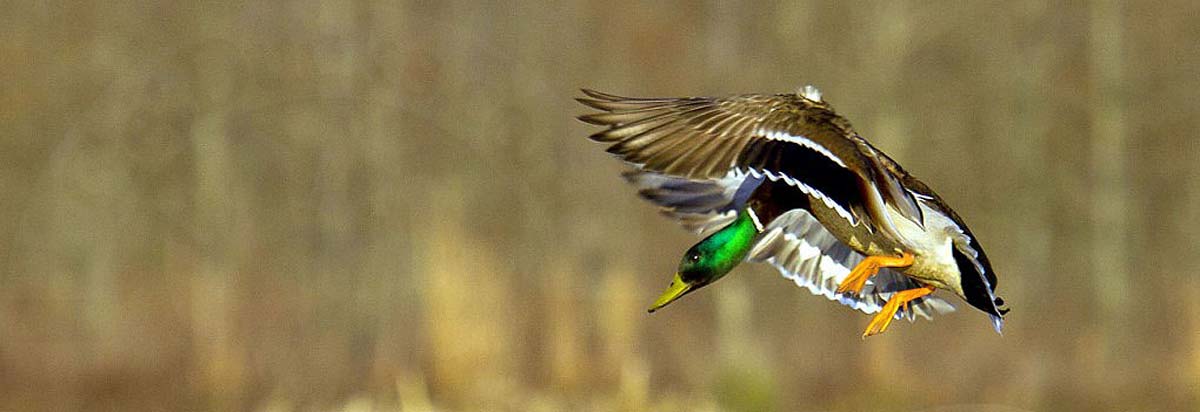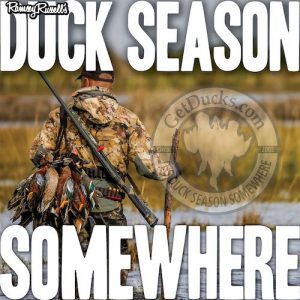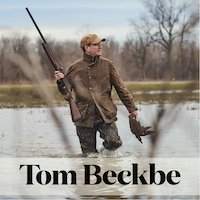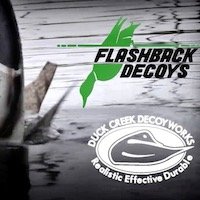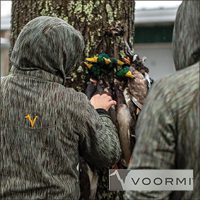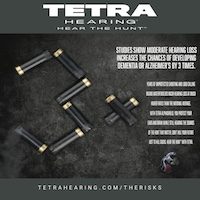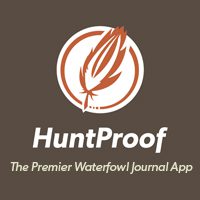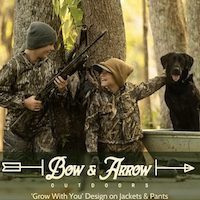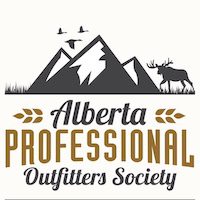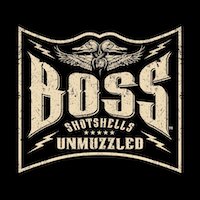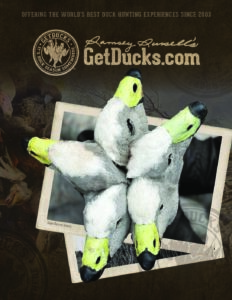A 7th-generation Baytown Texan, Shannon Tompkins was an outdoor journalist that highlighted Texas hunting and fishing for over 40 years. He recalls growing up duck hunting, describing his mentors and LeFour’s Model 12; places like the sprawling Barrow’s Ranch during its heyday, the infamous cardiac pond, Los Patos; bygone times like when Texas was the foremost US snow goose hunting destination. A self-described dinosaur in today’s duck hunting world, Tompkins cites several instances of “shifting baselines” regards Texas duck hunting then versus now.
Ramsey Russell: Welcome back to Mojo’s Duck Season Somewhere podcast. Today’s story began in a Texas teal blind. I was with my buddy Rob Sawyer, who brought a longtime buddy of his, today’s guest, mister Shannon Tompkins, who was a longtime writer for the Houston Chronicle, who also wrote for the Houston Post, who was in the reporting business for a long time and outdoor. The great thing about sharing a duck hunt with guys like this is they got stories, man. They got stories galore. Shannon, how the heck are you today?
Shannon Tompkins: I’m doing great, Ramsey. How are you doing?
Ramsey Russell: I’m good. You had yet a busy weekend I heard. You went out and spent some time with Rob and Gene, did you?
Shannon Tompkins: Yeah, we were just poking around and went over and sat with Gene. We all visited for probably, I don’t know, about 4 hours.
Ramsey Russell: That’s good. I love going back to meeting with guys that have seen yesteryear. I grew up sitting around the camp table and sitting around the dinner table with my grandfather and my family members and other people, generations before me that saw hunting back then I loved to sit down with Gene, love to sit down with Rob, to offer a lot of historical perspective. Apparently, a lot of our listeners like to hear this stuff too. When we were talking the other day on the telephone, you were telling me you’ve got an extensive family history in the state of Texas. What is that history, Shannon?
Shannon Tompkins: Well, it’s not all that unusual. I’m 7th generation texan.
Ramsey Russell: 7Th generation. Wow.
Shannon Tompkins: I guess my great-great-grandfather, maybe great-great-great-grandfather was what I like to call one of the original illegal aliens. He came across the Sabine instead of the Rio Grande in 1820, and when it was still Spain, held by Spain. So, my family’s been here for a little more than 200 years.
Ramsey Russell: Do you have any idea, or hand me down through the family tree story chain about what brought your great-great-granddaddy to Texas across the Sabine river back when it was a spanish territory?
Shannon Tompkins: No, I really don’t. I guess there were just a lot of people moving. Texas was a destination, and he left Tennessee and ended up in East Texas.
A Generational Hunting History
My father was a big duck hunter so, at least 3 generations, 4 generations.
Ramsey Russell: Wow. How far back did your duck hunting go in your family?
Shannon Tompkins: I really don’t know. I only know back as far as my great grandfather and my grandfather, they hunted ducks, of course. My father was a big duck hunter so, at least 3 generations, 4 generations.
Ramsey Russell: What was it like growing up 3 or 4 generations ago? What was it like you growing up with those duck hunters? and where did you grow up? Down around Baytown, you said.
Shannon Tompkins: Yeah, Baytown, which is on the north end of Galveston Bay, probably 50 miles east of Houston, might as well been 300 when I was growing up, because Houston was a long ways away. It’s not so much anymore. Baytown was a perfect spot to grow up as a duck hunter. You had everything. It had a huge duck hunting culture. You had the coastal marshes. You had bottom land timber along the trinity, and the bays, you had freshwater marsh, you had saltwater marsh, you had reservoirs, you just had a little bit of everything. Like I said, it was a very intense duck hunting culture in that place. So a lot of history, a lot of Texas duck hunting culture there. So it was a great place to grow up.
Ramsey Russell: Can you elaborate on a little bit of the extensive culture and deep roots around that area in former generations.
Shannon Tompkins: Well, if Texas has a decoy culture, it was centered in Baytown. The only really high profile Texas carvers were all from Baytown, all that area.
Ramsey Russell: Who were they?
Shannon Tompkins: Oh, Lecomps, the Bushes, the Tiltons. There were a handful of carvers who actually, I guess, made a name for themselves in the Baytown area. I grew up around that, all those guys. I didn’t really realize it at the time, like you do when you’re a kid. You really don’t understand how lucky you are.
Ramsey Russell: That’s the truth. You take it for granted. You grow up seeing it, you look at it, and you really don’t realize until it’s gone just what that really represented.
The First Goose White Spreads
Shannon Tompkins: Well, and just for an example, the white spread, the goose white spread, I think first they started using, newspapers, and they went to diapers and then on and on, but the white spread for geese originated in Baytown. There were a couple of guys, Jim Nelson and Bill Reid, back in the 40s. They were the first ones to use white spreads. Their wives actually made them white suits to blend in with their decoys. So that’s where that method of hunting geese actually started.
Ramsey Russell: One of my first trips, Shannon, outside of Mississippi, that started my whole traveling hunter life odyssey was a trip, I was in college, I guess, and I went on a buddy of a buddy recommendation somewhere down around Baytown. Hunted one of the MO outfitters, I called it outside of Katy, because it felt like. They had white suits and white decoys. By then, they had gone to the little flapping rags up on the sticks and stuff like that, and the gumbo mud and all. What I remember is the preponderance of bird pickers. Back in the day. There were families right there in what is now just engulfed by downtown Houston that made their livings doing nothing but plucking waterfowl. It looked like big, long cotton sacks hanging up over the ceilings, where they were mechanically plucking them, it vacuum up all those feathers, and they would sell those feathers. They plucked for whatever they were charging, say, $1, $2 apiece. Then they sell the feathers and everything else. It was really a big business. I guess you probably screw up seeing that in around Baytown, growing up, didn’t you? I bet it was better a big deal back in the day.
Shannon Tompkins: That seemed that was more out on the Katy prairie, where other than around, on the east side of Houston where I grew up, there were still pickers, but, there weren’t the big operations like there were, say, in Eagle Lake, Altair and that country over there. There were folks who, who made a pretty good penny.
Ramsey Russell: Driving through that Metropolis recently, back in till season. It’s somewhere along in that region. It’s so out of place today to see this, but there’s still a water tower somewhere with a big old snow goose on it, but it just seems out of place.
Shannon Tompkins: It’s the water tower right off Iten and Katy, it’s got snow geese and I think of Canada or two on it and it’s ironic that was the goose hunting capital of maybe the United States for probably 40, 50 years. Now the only goose that people around there see are those on the water tower. I’m afraid so.
Ramsey Russell: In that crazy. You’re probably right. It was probably at one time, and I probably back in the late 80s, early 90s, caught the absolute tail end of it. But it was the goose hunting capital maybe of the world. Now look how that trip started and I just got it, cause I’m not that darn old, but I am approaching old geezerdom, according to some of the younger associates I’ve got. When somebody called me an old geezer one time, it hurt my feelings, but I got to thinking. I said, when I was at such age, my granddad would, he’d have been about my age. So I’m at the age now that my grandfather was when he became critical of that heathen music and that long hair I had back about that age, you know what I’m saying? So maybe I’d need a t-shirt. Says, hey, I’m officially an old geezer. It’s so interesting to me looking back into those days and that era and how quickly time changed since then. It’s really changed down there since then.
Shannon Tompkins: Yeah it’s been interesting to watch and heartbreaking at the same time.
Ramsey Russell: It’s progress, man. It just, that’s the way of the world is progress. But I want to before we get back into anything like it, I want to circle way back and go back-
Shannon Tompkins: Sure.
Different Types of Hunting Country
Ramsey Russell: Go back to growing up. Do you remember some of your first hunts? What was it like growing up hunting with your daddy and your granddaddy, whomever, were your mentors in duck hunting down around Baytown? What did you all hunt? And how did you all hunt?
Shannon Tompkins: We had just a lot of country, different types of country, so actually started out hunting, creek bottoms, river bottoms in east Texas at the lower Trinity river, river bottoms. There’s a huge marsh at the mouth of the Trinity River. My dad had blinds back up in the marsh and back up in the river and some of the old natural lakes back up in there and old sloughs, so that’s where I really started hunting there and then just back and forth between the bottoms and the marsh and the bay. I just remember going along with my father to our, helping go build blinds and hunting back off of the lower Trinity, the lost river, the old river back in that country.
Ramsey Russell: What species were you all primarily targeting? What were the prevalent species back then? And I’m thinking at the same time, what those old decoy carvers around baytime, what species were they carving?
Focus on Wood Ducks, Gadwall, and Teal
We’d focus on mallards, wood ducks, gadwall, teal. It just depended on where you hunted. If you hunted up in the river, you were after mallards.
Shannon Tompkins: Well, most of them were hunting in river bottoms, so they were targeting mallards in most cases. We’d focus on mallards, wood ducks, gadwall, teal. It just depended on where you hunted. If you hunted up in the river, you were after mallards. At that time, there were still a lot of mallards wintering on the Texas coast in the coastal marsh. That coastal marsh was slowly transitioning from being a mostly fresh water and a little band of intermediate marsh to more intermediate and in salt marsh because of all the hydrological changes, the dams on the rivers, the, ditching of the intercostal canal, just so much hydrological changes, it shifted that marsh from mostly fresh water to mostly intermediate. So, we ended up losing our mallards. We ended up losing our big Canada geese. I got in on the tail end of when there were still a lot of mallards in the marsh, a lot of mallards in the river bottoms. So, mallards, wood ducks, Teal, Gadwall, that’s mostly, and then in the marsh, it was all, pintails. Pintails was a big draw.
Ramsey Russell: So that’s what I think of it. Now when I think, of course, mallards are very predominant species. They’re practically everywhere. But when I think of the part of the world you all are in, I think of the teal, the Gadwall, The pintails and the Whistling ducks. I shot some of my first whistling down in Texas. Didn’t know what it was way back in the 80s. Had no idea what a whistling duck was till they hit the ground and I looked at them.
Black-Bellied Whistling Ducks
It’s interesting, growing up, you would occasionally see a Fulvous whistling duck in the country I spent time in, occasionally. Black bellies you never saw them.
Shannon Tompkins: Well, it’s interesting, growing up, you would occasionally see a Fulvous whistling duck in the country I spent time in, occasionally. Black bellies you never saw them. It’s interesting, there’s been so many shifts in waterfowl distribution and ranges over my lifetime. Like I said, back then, the only places you could find black-bellies were in the Rio Grande valley, the lower Rio Grande. There were some at Lake Corpus Christi, and occasionally someone would see some on Galveston island. But black-bellied whistling ducks, we’ve lost a lot of birds. We’ve lost a lot, most of our mallards, of course, we’ve lost more than 90% of our geese over the past 20 years. But we’ve seen these shifts in the black bellies. They’re everywhere now, and they’re expanding their range. I had a friend in Minnesota who sent me a picture of a black belly in Minnesota. Till the time I was, I don’t know, 35 or 40 years old, there were no black bellies up here. It’s been interesting to see that shift. Right now, we’re seeing, There’s an eastern range expansion of cinnamon teal but, yeah, we’re seeing a lot of different birds. We’ve seen birds leave, but we’ve seen birds move in. White wing doves, for example, were basically relegated to the Rio Grande Valley when I was young and there are nesting white wings in Arkansas now. So it’s been interesting to see the shift in, in bird distribution, and not just range wise, but in Texas, when I was young, probably 90% of the waterfowl that wintered along the Texas coast are in eastern Texas, the timbered area of eastern Texas. Now, depending on the precipitation and habitat conditions, the bird distribution in Texas has shifted. It can be most of the birds in north central Texas, what they call the rolling plains or the panhandle, tons more in south Texas and that country down there, and the reason is the habitat changes. There are now literally millions of stock tanks, farm ponds all through that country. When it’s wet, that’s where those birds stop instead of coming to the coast or to east Texas. So just dependent on the year, the distribution of birds in Texas can vary wildly. There are some regions of the state, several years lately, more birds have held in the rolling plains and the blackland prairie that never got to the coast. You never saw that 40 years ago.
Ramsey Russell: Isn’t that something. You talk about the black-bellied whistling ducks, we’ve had this conversation before here on this podcast. I asked how far north are people seeing black-bellied whistling ducks now, Gene Campbell described seeing his first down around Anahuac in 1985. Now, for whatever reason, their distribution has changed markedly. We got reports from Delaware, Ohio, Wisconsin, Minnesota, all up throughout the upper flyway. Recently, someone sent me a screenshot of a post on Instagram where a black-bellied whistling duck had been shot in prairie Canada this fall. That’s just crazy.
Shannon Tompkins: Yeah. Actually, a flock or two in Nova Scotia this year. Not just an aberrant bird, but this was a group of birds. So it’s interesting to see how wildlife distribution’s always change, but it sure has accelerated, seems to have accelerated in the last 30, 40 years.
Ramsey Russell: Nathan Marks with hunt proof was on here recently, describing he is hunting up in Illinois. Tim grounds, hallowed ground, which used to be just freaking the epicenter of wintering Canada geese and now they target a lot of white fronts, which back in the day, I was coming down to your neck of the woods, that was a big bird down there. White fronts going down to the coastal prairie was a huge bird, and now they’re overwintering at least as far north as Illinois.
Shannon Tompkins: Sure. When you’ve got Kansas winter and more snow geese than Texas, things have changed.
Ramsey Russell: That’s right.
Shannon Tompkins: When I was young, we actually used to hunt a lot of geese in lower Rio Grande Valley and into northeastern Mexico. There was a lot of small Canadas in, in that country.
Ramsey Russell: Yeah.
Shannon Tompkins: There are basically no Canadas anywhere on the Texas, certainly not in north-eastern Mexico anymore, and certainly not along the Texas coast. It’s rare to see a Canada down here.
Ramsey Russell: It wasn’t uncommon to shoot the little cackler geese, when I was down there 30 years ago, it wasn’t uncommon at all to shoot cacklers. They would come in. So a lot of times when we put out a big white spread, we would attract a few cacklers or whatever like that. It’s just interesting. That’s a topic I didn’t expect to get into this morning, was the distribution of birds, of a lot of these migratory birds. Which reminds me of some of the fieldwork I’ve done in forestry in the past. When we go and make a snapshot, draw a map, print a distribution of plants or trees, the human mind, when we go out and take a picture of this right now, we tend to think this is what it is instead of this is what it is right now, because it always changes. The whole world is in a state of dynamic flux, especially now with, for a lot of different reasons, because of sprawling civilizations, I should say.
Shannon Tompkins: Right. Well, we both have back academic backgrounds in wildlife science. You may remember this, there’s, I remember being taught shifting baseline syndrome. That’s what you’re talking about. That’s what’s happened over the past couple of generations. We all shift our baselines. My baseline’s basically 1960 to 1975 and so my baseline is not going to be the same as somebody who started basically waterfowl hunting in 2000. It’s what seems normal to them seems certainly abnormal to me.
All About a Model-12
So now I still get to shoot Morgan Lafour’s model-12. It’s just a sweet gun.
Ramsey Russell: Right. That’s a really good point. You start getting into musical taste. I would definitely say my baseline is 70s and 80s, maybe early 90s. Somebody was telling me a story the other day about, they were in a public land duck hole and somebody showed up and told him to get out. He’d been hunting that hole for ten years and they were there first. And he said, you don’t understand. I’m so and so. And I asked the guy, I said, who is that? He looked at me and go, famous country singer. I said, well, I don’t know him. I guess my base line for country music is somewhere back around Merle Haggard and Willie Nelson. I don’t know who these young sparkly jean country singers are anymore, but there is a shift in baseline all the time. Going back to you growing up, you told me a story the other day about a model-12.
Shannon Tompkins: It is an interesting story. I don’t know if people are interested in it, but there you, when I was growing up, there was a family that lived in Trinity River bottoms. They had hunted ducks for generations, actually. The older guy was a guy named Morgan Lafour. He actually guided duck hunts in that lower Trinity River country. There’s a couple of old natural lakes back there that he had blinds on, he built blinds on them, and folks would come pay him $10 and he’d put them in a boat and tie a bunch of boats together and drag them out across Lake Charlotte and jump them off at different blinds. He was just a world class duck collar. That guy was born, I think, about early 1900s. So it was about my grandfather’s age. I can remember hunting there. I can remember him call, hearing him call and watching him shoot, and he was just like a, like an icon in that little area. Long story short, he was actually, he was one of the best waterfowl shots. Bob Brewster, who was shooting editor for sports Field and also outdoor writer at the Chronicle, where I worked, said he was, one of the best duck shots he’d ever seen and one of the best duck callers. But anyway, Mr. Lafour eventually passed away, and I won’t get into all the details. I guess a year or so ago, I found a gun. I was looking at model 97s and Model 12s online as some couple of gun shops that handle used guns, and there was a model twelve that on the pistol grip had a little brass plate that said Morgan Lafour on it was. Yeah, it was Mister Lafour’s model-12. I think it’s 1948 model or something like that. Long story short, one of my brothers, I have 4 brothers, one of my brothers was close friends with Mr. Lafour’s daughter and anyway, we ended up getting to buy that shotgun. So now I still get to shoot Morgan Lafour’s model-12. It’s just a sweet gun. It’s a feel grade, fixed, modified choke. Just a beautiful old gun and it’s really a lot of fun to be able to hold that history in your hand and actually take it out and shoot it again.
Ramsey Russell: So thanks to a buddy of mine named Zach Browley up in Michigan, I have a model 12 and a Model 97. My buddy Del Borland shoots a model 97 almost exclusively, and I got a hankering for one just to have it. It’s not a particularly expensive gun for an old antiquity that still functions like it’s supposed to and, boss shot shells, bismuth 10 alloy. There are no safe queens anymore. You can take those old guns out and hunt very effectively with this new ammo. My dad and uncle were given a pair of model 12s, on their 15th birthday. Consecutive numbers, or maybe their 15th Christmas, not their birthday to Christmas. When I was in between a little 20 gauge, it didn’t fit me no more because my papa solved the stock and the 12 gauge. He ended up giving me his 12 gauge of Remington 1100. I shot my dad’s model 12 and that was what I used when I went dove hunting or whatever have you. I love that gun to this day. I like taking those old guns out sometimes and just having that hunt. That’s a treasure to have one that’s got so much history behind it, you know?
Shannon Tompkins: Sure. I enjoy it. The shotgun I’ve used for the past 50 plus years is a 2 and 3 quarter inch gun. It’s a wingmaster I bought in 1969. I still shoot it. It’s a 2 and 3 quarter inch plane barrel, fixed, modified choke and I shoot it 90% of the time. There’s no reason to change. Yeah.
Ramsey Russell: If it ain’t broke, don’t fix it.
Shannon Tompkins: Yeah.
Ramsey Russell: I took out that old gun I shot in high school, that 1100, which at one time, preceding steel shot, I thought it could be the only shotgun I ever owned. I took it out the other day, and it’s corroded. It doesn’t have the vent rib or any of that stuff. It’s just a round barrel, and when I took it out, I was surprised that it even had the bead on the front of it. I just don’t recall ever seeing the bead on it. I guess I don’t look at the bead. But it’s an old papaw, man. It’s a shooting son of a gun. I think those old, fixed chokes and those older guns preceding steel shot, I think the chokes were different. The whole mechanics of the barrel dynamic was different as it throws, then lead, now copper plated bismuth patterns. It’s totally different. I know those old men, those old generations, they had a lot of ducks, a lot more birds, a lot more opportunity maybe than we do today. I just seem to remember my grandfather and a lot of his generation being exceptional shots, especially as compared to a youngster like I was at the time. Once you start shooting those old guns, you go, well, they had a whole lot going for them now, saying they didn’t, they weren’t having to swing wooden baseball bats. They were swinging the big aluminums. Back in the day, those guns shot well, I felt like.
Shannon Tompkins: I don’t feel restricted shooting a 2 and 3 quarter inch gun anymore. Yeah, it’s been hard to find 2 and 3 quarter inch non-toxic and-
Boss Revolutionizes Non-Toxic Shot Availability
I had been over in Europe, hunting in the Netherlands and shooting 2 and 3-inch steel because 3-inch steel because of the anti-hunting movement over there is prohibited. I was impressed with how well they hit.
Ramsey Russell: It’s very hard. I don’t know of anybody until boss came along. That’s just the truth. I had been over in Europe, hunting in the Netherlands and shooting 2 and 3-inch steel because 3-inch steel because of the anti-hunting movement over there is prohibited. I was impressed with how well they hit. Over in Australia, we shoot a lot of 2 and 3-quarter inch steel shot, and it works fine. But trying to find 2 and 3-quarter inch non tox before Boss came along was impossible. I just could not find it. In the United States, I find 3-inch, 3½-inch. That was it. The older I get, Shannon, I don’t like the recoil. You don’t need the recall, and it doesn’t need to knock your feelings out of your tooth to kill a duck. If it does, you’re doing it wrong, in my humble opinion. Again, talking about the shift in baselines, the shifting baselines, and I guess the baselines for music, baselines for waterfowl distribution, baselines for how we hunt. Waterfowl has continued to change since the good old days.
Shannon Tompkins: Sure, it has. That baseline, changes people’s perspectives. We have different perspectives on things, generational perspectives. I don’t know if it’s amused me, but it’s been real obvious me over the years. It’s, one of the things you hear today is how crowded, it is waterfowl hunting in Texas. This is from people who generally never didn’t start duck hunting until, maybe, 30 years ago and they just have no idea how that’s changed in Texas over the past 30, 40 years, too.
Ramsey Russell: You’re saying it is a lot more crowded than it was 30, 40 years ago?
Shannon Tompkins: Well, there’s half the number of duck hunters in Texas now, as there were in the mid-70s. Half.
Ramsey Russell: Wow.
Shannon Tompkins: When I started duck hunting, there were almost no public areas in Texas. There weren’t any WMA’s or a handful, but that’s all exploded since the 80s. I guess it’s just where you’re coming from. It may seem more crowded, but these are people who weren’t sitting in line at the barrow ranch with 500 car, there would be 500 people go into that ranch on opening morning. It’s crowded, but it was a lot more crowded back then. In some areas, I guess we had more country to hunt. The amount of waterfowl habitat in Texas has, particularly on the coast, the Houston area, has really changed a lot in the past 30, 40 years. We’ve lost an incredible amount of habitat to the greater Houston area is sprawl. I think we talked about this a little bit before. When I was born, there were about 8 million people in Texas. There’s about 32 million there.
Ramsey Russell: Golly, that’s 10 times the population of Mississippi.
Shannon Tompkins: The Greater Houston’s population is about 7.4 million right now. There’s a million more people in the greater Houston area than in the entire state of Mississippi and Arkansas together. Think about that. There’s a million more in the Houston area than those two states combined. So you could take everybody in Mississippi, everybody in Arkansas, and you still are millions short of what’s in the greater Houston area.
Ramsey Russell: That’s amazing.
Shannon Tompkins: That’s from 1990, which is 32 years ago now. Texas populations doubled in that period, and I was looking at forecasts the other day for 70 years down the line, 2100 basically, and that 7.4 million supposed to turn to Houston to 31 million.
Ramsey Russell: 31 million people that need energy and water.
Shannon Tompkins: Right. That’s where we’ve lost so much habitat. Then so much of the rural habitat too, we’re losing a lot of ground to solar farms and wind farms, and it’s just chewing away at what we had. So that’s just changing.
Ramsey Russell: Slade Sherwin was on here recently from down in Portland County and said about 20,000 acres of rice has come out of that prairie down there, just in his county, where he farms and has farmed for 4 generations, and upwards of 80,000 acres targeted for that county. Nothing lives in a solar farm but one critter.
Shannon Tompkins: Wasps.
Ramsey Russell: Red wasp. That’s it. The spawn of satan himself. Nothing else. There’s nothing whatsoever. I’m just not so sure that this green energy is where we ought to be putting our eggs anyway. You can’t convince me of that, Shannon. A couple of years ago, you all had that big cold front down in Texas and the whole entire power grid failed. You can’t convince me that taking all that habitat to put it into put into green energy is worth it. I just don’t believe it.
Shannon Tompkins: Well, it’s going into housing and a lot of other things too, and that’s triggered changes. When I was young, I’m talking my teens, and 20s more soil management was not a big deal in Texas. I mean, we basically just let nature take its course. There was still enough habitat and rice country to generate habitat. Then it really started in the 90s, you started to see landowners and other people focus on active management. I’ve seen a lot of change, but one of the biggest changes has been how active management by landowners and land managers to build and rehab and preserve Wetlands. I think without that active management, 99% of it, generated by people interested in waterfowl hunting, we would have lost a lot more and we’d be in a bigger hole than we find ourselves sometimes here. So, hats off to landowners who’ve and managers who’ve taken upon themselves and at great cost to them to do this, and it doesn’t just benefit, obviously-
Ramsey Russell: Not just in Texas, but throughout the entire flyway from the Arctic down to the Gulf coast, you know.
Texas: A Stronghold for Hunting
I remember 16% of the population held a hunting license in Texas. Right now it’s 4%.
Shannon Tompkins: Right.
Ramsey Russell: I don’t know what the percent is, but just a wild ass guess, I’d say 75%-90% of the habitats that migrating waterfowl utilize in North America is on private property. They don’t just live on private property. They bounce around. They move, they shift, they migrate. They go to find new water and stay in thermocline, temperature thermoclines. Without the private landowners that are interested in ducks and managing habitat and agriculture, we would have no habitat at all.
Shannon Tompkins: The population at large doesn’t understand that. It benefits everybody and everything from water quality to just quality of life, but we have a huge majority of the population who has what Richard Louv termed nature deficit disorder. They don’t make that connection, and one of the things that concerns me is not just the growing population, but the disconnect between the general public and what we do. I was thinking back when I first started my career in newspapers here in Texas. I remember 16% of the population held a hunting license in Texas. Right now it’s 4%.
Ramsey Russell: Golly Shannon, you got to be kidding.
Shannon Tompkins: No.
Ramsey Russell: 4%. Excuse me, Texas is one of the strongholds of hunting. I mean, pull into a bucky’s parking lot on open day of dove season, and they say the largest arms force in America is standing in a bucky’s parking lot on opening day of dove season. That’s hard to believe that it’s declined 75%.
Shannon Tompkins: Well, that’s just as a percentage of the population. Our hunting license sales numbers are, pretty steady. We’ll sell more hunting license than any other state in the union, but we’re only 4% of the population in the state now. It’s worse, in a lot of states. California is not even 1%. Florida, it’s only 1%. 1% of the population in Florida holds hunting license.
Ramsey Russell: Wow.
Shannon Tompkins: We’re an increasingly smaller portion of the population, we and our interests have a really big impact on the rest of population they just don’t know about. So that’s one of the changes I’ve certainly seen over the past 40, 50 years.
Ramsey Russell: If we can agree there’s because there’s not about, it’s about a million waterfowl hunters in the United States of America, just under a million. There’s about 330 million Americans. That’s 3/10th of a percent of Americans duck hunted all or waterfowl hunt at all.
Shannon Tompkins: Right.
Ramsey Russell: Talk about a shift in baseline, I guess after World War 2, everybody had a model-12 shot gun and went out shot ducks.
Shannon Tompkins: Like I said, us water fowlers, we don’t like being crowded, so we’re going to complain about being about the number of folks we have out there, but if you really look at the numbers, duck stamp sales peaked in the mid-70s at about 2½ million, and it dropped precipitously in the late-80s, early-90s, when the drought on the prairies triggered, really conservative seasons and bag limits, and it just really has not bounced back since then. It’s staying steady. I mean it’s slightly growing, but it’s certainly not anywhere like it was, 50 years ago.
Ramsey Russell: Well, you make a good point about some things in duck hunting never change. Duck hunters, we won’t whine, we won’t naïve, we want to have it all to ourselves and it’s always been that way, in the world of duck hunting. I saw my buddy Ryan graves up in Illinois, Tennessee. He’s a collector of old antiquities in waterfowl hunting, and he’s got an old journal that was way back in the early 1900s, I mean, way back in the glory days of American hunting and it was a journal, and he flipped a page, and he showed me one of the man’s entries. The man had entered way back in the 1900s when you just imagine that waterfowl darkened every. The sky above every duck color in America, and the man literally wrote down for that day’s industry didn’t shoot shit. It changes all the time. I’ve written or made a middle note of that myself, I said, it could happen to anybody, even back in the day.
Shannon Tompkins: Sure. We remember the great days. We don’t tend to remember the days where we didn’t do so well, but it’s those great days that keep us coming back. I don’t see interest in waterfowl hunting in the diminishing anytime soon-
Ramsey Russell: Shannon, You talked about. Oh, go ahead. I’m sorry. I didn’t mean to interrupt you.
Shannon Tompkins: No, go ahead.
Ramsey Russell: Well, you talked about having a background in, academic background in wildlife management, but you were in the newspaper business for 40 years. How did that come about?
The Impact of Modern Science and Technology on Waterfowl Conservation
But just the science and the technology available today has really been a boon to learning more about how what we do affects waterfowl and how to help waterfowl, how to help wetlands.
Shannon Tompkins: We don’t have long enough to do this. I started out wanting to focus on wildlife sciences, what they now call conservation science, so I went through that. It was hard to get a job in that back then unless you had enough graduate degree. Got a journalism degree and then went to post grad work in political science and public policy. So I had this really diverse background, and I actually started out as just a straight news reporter, and then just a series of events led me to just focusing on outdoors. Outdoor recreation and natural resource issues is what I really covered. I covered hunting and fishing, but also covered a lot of natural resource issues because it all dovetails together. A lot of the public policy, a lot of wildlife management, a lot of changes in regulations and research. While I’ve researched, that’s what I ended up covering for my, 40 plus years. That was really interesting to see how things have changed from when I first started to today. The difference in and in regulations, wildlife management techniques and focuses have really changed. I mean, you’re aware of this, some of the science. I couldn’t have imagined some of the stuff they’re able to do today, some of the research they’re able to do today. A lot of hunters really don’t realize how much information and how hard some of these people work and how much we’ve learned from over the past 50 years. A lot of us, it started in waterfowl, would read and some of those folks, and they were great. They taught us a lot. But just the science and the technology available today has really been a boon to learning more about how what we do affects waterfowl and how to help waterfowl, how to help wetlands. It’s really been gratifying to watch, that’s been a real positive thing in my mind over the past 50 years. The changes in public policy and science have really benefited us.
Ramsey Russell: My buddy Joe Briscoe said he read every newspaper article you ever wrote. I know Joe’s listening I didn’t say this on the phone when he told me that, but I was just shocked that he could read and that he read it all. I know he’s cussing me right now, but he was telling me that you guided, at one time, something called Los Patos. What was Los Patos?
Shannon Tompkins: When I was in college, I actually guided on the barrow ranch a little, and Los Patos was another waterfowl guides operation in East Texas, lower Trinity. A fellow named Forrest west, who was a really high profile guide around here ran it. I guided some when I was going to college. I didn’t do it a lot, but I did it enough to know of it. There’s a lot of difference in doing it when you want to and doing it because you have to.
Ramsey Russell: You ain’t lying. Everybody wants to be a duck guide till it’s time to do real duck guide stuff.
Shannon Tompkins: That old Texas saying, everybody wants to be a cowboy till this time, do cowboy stuff.
Ramsey Russell: That’s right.
Shannon Tompkins: There’s a lot of truth in that.
Ramsey Russell: That’s right. Well, you mentioned the Barrows ranch and you mentioned East Texas, and those subjects come up a lot. There was a time that east Texas had a lot bigger waterfowl history, a lot more duck hunters, a lot more habitat than what they presently do. The Barrows ranch was one of the foremost properties over there. Could you elaborate on both?
Shannon Tompkins: I think one of the reasons it was, it has such a high profile is it was, like I said, back in the 60s, early-70s, there was darn little public waterfowl hunting available in Texas. Low cost public hunting. I mean, you had leases, but there were no WMAs, just a couple. The Barrow ranch was, like I said, it was over in Chambers County. It was about 25,000 acres, and you could go there and pay, when I first started, I think it was $5 a day. You had 25,000 acres of rice, some fresh water and intermediate marsh, and you line up at the gate, go in, pay your $5 or $10, and you had access to this incredible piece of property that was just working alive with waterfowl. So it became the go to spot for so many people in the Houston area because it was available, it was inexpensive, and anybody could go there. So that’s one of the reasons it became such a touchstone in the area. There were a couple of other smaller areas, smaller ranches that did this too, take a $5 or $20. When Barrows finally closed, when they finally sold to the Nature conservancy, part of the family sold 2/3rd of it to the Nature conservancy, which then it’s now part of the Anahuac National Wildlife Refuge. It is open for hunting. But at the time, if you wanted to learn duck hunting, if you wanted to go duck hunting, there was a place and you could access Sussex by vehicles. You got to remember that this was the time before even, even ATV’s or 3-wheelers, there was none of that stuff. So, if you didn’t have a boat or anything else, you could go hunt that area, and the fellow who ran it, Joe Lego, who was a real mentor to me and just a wonderful man and visionary in a lot of ways, was a great conservationist, he ran it. He was almost a grandfather to me. It was just an amazing place for a young kid to learn about waterfowl and life.
Ramsey Russell: Joe said you hunted probably every duck hole on the Barrows ranch. Is that an exaggeration or did you really?
Shannon Tompkins: It was 25,000 acres. I didn’t hit them all, but I hit a bunch of them. But I was young and could do it back then it was, and that was the thing, is you were pretty much left to your own devises and just depended on how much you wanted it to go. There were so many great characters down there and older hunters who you could sit around and talk with them and watch them and learn from them and that’s one thing I think is missing these days, is there’s just not a lot of that. People either learn by doing or by watching videos. They don’t sit and talk or watch older hunters or have mentors.
Ramsey Russell: Right.
Shannon Tompkins: I was blessed with some of the best. I was just so lucky where I was born, lucky the family I was born in, lucky the area I lived in, lucky the people around me. Just got lucky.
Passing on the Tradition: Changes in Duck Hunting
Ramsey Russell: Why do you think? There seems to be a dearth of mentorship in and duck hunting today. Is it just as straightforward as, well, there were 16%, and now there’s only 4%? Or is there something else going on?
Shannon Tompkins: I don’t know. There’s something else going on. The world has changed. The way people get information, the way people get initiated into the sport, it has changed greatly, and I just don’t think there’s as much of a social and cultural connection as there used to be. A lot of families are fractured now. A lot of families grow up, kids grow up in 4 states over from their grandparents. So, how do they make that connection? I was lucky to have a core family that stayed in the same spot for so long. I think that has something to do with it. Families are scattered, and there’s so many other distractions, and we’re not nearly as tied to the land people of my generation. I’m a boomer, so blame me for that. But I up one generation separated from land. My grandparents still owned rural property. I was still directly connected to that land.
Ramsey Russell: Right.
Shannon Tompkins: How many of us my age would go spend the summers with their grandparents on the farm, or on the ranch. We had that connection, and I just think we don’t have that anymore. We’re more separated from our families. We’re connected in so many other ways, with the Internet, you can call long distance, and it doesn’t cost you these days.
Ramsey Russell: Isn’t that crazy? You can get on your cell phone and talk to anybody for whatever your monthly bill is. I mean, unlimited everything.
Shannon Tompkins: Right.
Ramsey Russell: Boy, back in the back of the day, it was a dime a minute, right. Sunday night between 7 and 9.
Shannon Tompkins: Right? If you want to make a long-distance call, there had to be a reason for it. You didn’t just call to say what you have for supper.
Ramsey Russell: Yeah.
Shannon Tompkins: The world has changed a lot. I can’t answer your question, and I don’t know if anybody else can either.
Ramsey Russell: But times are changing again, those shifts in baselines. Tell me about the cardiac pond. Now, there weren’t ATV’s. It was the good old days. You were young and gung-ho. Tell me why they called it the cardiac hole, and tell me some memorable events going back there to cardiac pond.
Shannon Tompkins: There was a spot. When they actually opened a new fish wildlife service, bought a tract of land back in Chambers county called a pace track. I guess it was probably about 1980, and it had been a big, it had been private property and been leased for duck hunting. But anyway, they opened it up to public hunting. It was close to where I lived, and so we started hunting it. There were about 4, 5 of us together. We went out there scouting it a few times and found these ponds, marsh ponds way back in the middle of this thing. To get to it, there was an old airboat trail and then a series of sloughs, little, small sloughs. We would drive out there, take our prows in our boat, get our prow out, load gear into it, drag it down the airboat trail for probably half a mile and then another half mile, through these sloughs to get to this pond. It was worth it because this was back in the days of, the pond system, those ponds back marsh ponds back there, they’d be full of widgeon grass, depending on if it was wet or you had a lot of fresh water or salt water. But it mat over and pintails would fall into that thing like you would.
Ramsey Russell: Not believe how far a walk was.
Shannon Tompkins: It was probably a mile, but we’re young, but one of our little, small group was actually one of my brother’s brothers-in-law, a guy named Skip Reed. And Skip was a couple years older than me, Vietnam veteran and we’d go hunt that pond. With Skip being a couple of years older than us, it was a little harder on him than it was us. But that’s how that pond got its name was. He said, I’m going to have a cardiac every time I go out there. So that’s how the pond got its name was my friend Skip Reed. We going to go hunt that cardiac pond. So that’s how that pond got named it, and I guess word got out that’s what we called it, because there was a fish and wildlife service refuge law enforcement officer who would check us all out there occasionally.
Ramsey Russell: He must have been young and gung-ho to walk a mile to go check on her.
Shannon Tompkins: I tell you, that guy, his last name was Jackson, and that guy could walk marsh like nobody I’d ever seen. He’d check us, and we became acquaintances, and we sit and talk and, he started calling it the cardiac and then just spread from there and now, 40 something years later, that’s what everybody calls that pond on that pace track is a cardiac. It all goes back to Skip Reed thinking he was going to have a stroke, walking out through that marsh to get.
Ramsey Russell: Through it or walking back with ducks. That’s the tough part. You still got to walk on a good day. You got more weight you got to carry back.
Shannon Tompkins: Well, you got to remember back then it was ten ducks a day. There was a lot of times we carried ten ducks out of there. So it was just one of those places special places. We’ve all got them, you just have so many great experiences in.
Ramsey Russell: Is that duck hole still on the place? Do you know whether or not it’s still there and still good hunting? I hate to throw it on a map, but it ain’t like there’s a spot on the map that says Cardiac pond.
Shannon Tompkins: No. It’s changed over the past 40 years. Hurricanes have really opened it up. Again, one of the big changes along the Texas coast is people don’t see this unless they have 50 years experience looking at the same spot. Hydrological changes on the Texas coast have been incredible. That marsh does not look anything like it looked 40 years ago. It’s become more open. You’ve got more saltwater intrusion, which has just slowly eroded that pond. It’s now probably 3 times the size it used to be. It’s just changed, and bird distribution has changed. I haven’t been out there in several years, I haven’t hunted in several years but from what I understand from people who do it, you still kill a bird or two there, but it is, shoulder to shoulder hunters, and it’s just not the same.
The Heyday of Goose Hunting
So from one point, say 1.2, 1.3 million geese in late 1990s, to I think last year, it was 120,000, 90% decline. There were these huge goose roosts just sprinkled all along the Texas coast.
Ramsey Russell: Nothing stays the same, Shannon. We were talking about urban sprawl. We were talking about the population of Texas. We were talking about how your backyard has just exploded, talking about the heyday of goose hunting and everything else. Like back in the day, there were a lot of snow geese, and if you get outside of Texas, there’s still a lot of rice and a lot of habitat, a lot of agriculture, a lot of solar-pane, but there’s not a lot of geese. Somebody told me that a lot of the big snow goose roofs that were still there as recently as when I hunted it 25, 30 years ago, they’ve been paved over, put into shopping centers and everything else. What do you know about those big roofs and what happened to them?
Shannon Tompkins: That was one of the things landowners did back then was they would flood areas both on the east side and the west side of Houston. Large areas, sometimes 200, 300 acres that were just inviolate roosts. Some of the refuges had had roosts on them, too. So you had these huge clusters of geese all along the coast that would spread out, leave in the morning and go feed in these fields. As rice production in Texas fell off, caused by a lot of half a dozen different things, that and urban sprawl of Houston, they’re gone. We peaked our winter population of snow geese peaked in the late 90s, early 2000s. I think I saw the coastal midwinter population went from 1.2 million, and you understand these are indexes. This is another numbers. You understand how indexes work.
Ramsey Russell: That’s right.
Shannon Tompkins: So from one point, say 1.2, 1.3 million geese in late 1990s, to I think last year, it was 120,000, 90% decline. There were these huge goose roosts just sprinkled all along the Texas coast. One of the things that I don’t think, I know hunters today on the Texas coast will never experience is what we experienced, I would go hunting in the morning and we’d hunt until 10:00, 11:00, come home, clean our birds, and then I would go take a nap. I can remember laying in bed and all I could hear was geese in my head. I could still hear them because you heard geese from the time you got in the field in the morning till you left. There was never a time you could not hear geese. So, it was like white noise around you. That’s how many geese there were on those prairies back then and that’s certainly not the case today. Now, it may be the case in Arkansas, it may be the case in parts of Kansas or Missouri where those birds have shifted to. There are still some pockets of snow geese down here in Texas. You can still have a good snow goose hunt down here. You’ve just got to focus on the small areas, the relatively small areas that they’re in now.
Ramsey Russell: Right.
Shannon Tompkins: Snow goose calls were the white noise, the background noise outside at all time.
In it for the Experience
No, I guess it’s just the way you score a hunt these days seems to have focused more on how many birds you have than maybe the experience.
Ramsey Russell: Well, I’m going to end this discussion on this note. We’ve talked a lot about, ‘shifting baselines in Texas’ and we talked about a lot of big changes throughout, since you were a little boy hunting 3rd and 4th generation down around Baytown. How have you changed as a hunter? We were talking about this the other day a little bit about how you felt like maybe you were a dinosaur, that a lot of your baseline reference for duck hunting is just gone or changed and you can’t get over that. But for example, you don’t hunt with a lot of folks. You want to hunt with just 1 or 2 people and talk a little bit about how hunting, you’re hunting then versus now?
Shannon Tompkins: Well I guess I’m an anachronism because everything I got is old.
Ramsey Russell: Me too.
Shannon Tompkins: I shoot the same gun, started shooting in 1969. I shoot 2 and 3-quarter inch shells. I didn’t hunt in big groups. It’s just 1 or 2 people and maybe 3 or 4, and it’s just changed. It’s rare to see somebody duck hunting by themselves anymore. It’s become almost a group activity.
Ramsey Russell: Well I heard some reports on public land Arkansas, there’s groups of 10, 15, 20 guys walking around now, and willing to fall in with 15, 20, 30 other guys, on opening day, just to get along. Let’s all get along and hunt together.
Shannon Tompkins: Yeah.
Ramsey Russell: AI hunt with a lot of groups, a lot of social people along the way. I just can’t imagine climbing off into a duck hole with 20 or 30 other people. I just can’t even fathom.
Shannon Tompkins: That’s not something I’ll ever do, really.
Ramsey Russell: Most of the dove hunts I go on don’t have that many people shooting the field, you know?
Shannon Tompkins: Right. It’s become a group activity more than just a a couple of friends, 2 or 3 people, or something like that. It’s interesting to see everybody seems to be focused on how many birds they shoot or something like that. I don’t participate in social media at all, but I’ll see these posts on forums. We had a 6-man or a 5-man. And you’re going a 6-man. It’s a 6-man limit. Yeah, we had a great hunt today. No, I guess it’s just the way you score a hunt these days seems to have focused more on how many birds you have than maybe the experience. I can remember some of my favorite hunts, I couldn’t tell you how many birds we shot, because it’s things that happen during the hunt that matter, things you see or just-
Ramsey Russell: In all fairness, I was going through a photo album the other day, looking at some photos of an old friend that just passed, and then I could see the ducks that we were holding for pictures. Sometimes it was a lot, sometimes it wasn’t, and all these years later, I couldn’t tell you how many we shot. But now, in all fairness, we weren’t out there just to watch nature. You know what I’m saying? We weren’t out there to watch a sunrise and drink cup of coffee. We go duck hunting to hunt ducks and so I think that’s very fair. At what point in your life did your baseline quit shifting, like you say, this is my baseline, this is my experience, this is what I like. At what time did you quit growing with the times and become a dinosaur? I feel like I’m a dinosaur too, in a lot of respect.
Shannon Tompkins: I don’t know. That’s a hard question to answer. I’ve changed. I used to like to pull the trigger. I don’t care now if I fire shot. I don’t know when that changed, but it did, and I still love to duck hunt. I still love to shoot ducks, but I’m not going to fight somebody for ducks. I am in it for the experience.
Ramsey Russell: Right.
Shannon Tompkins: It means too much to me and I just hope people recognize it for the total experience it is and not just focus on one thing. It’s the dogs, it’s the people you’re with and it’s the moment. That’s a thing about duck hunting, is, that my favorite part of a duck hunt is that 10 minutes for shooting time.
Ramsey Russell: Yeah.
Shannon Tompkins: When I can sit down with a cup of coffee and maybe hear birds overhead. That’s the point where all things are possible. You don’t know what the day is going to bring. All things are possible, and you’re just there to see what happens. If that attitude makes me a dinosaur, I guess I’ll so be it, and I’m fine with that. Every generation goes through this, I’m sure my grandfather and the guys who were my mentors back then probably thought this in generations, they’re a lost cause, but I’m just happy to still be doing it, 60 plus years after I started. It’s interesting, the first duck hunts I ever went on were with my father in the great duck depression of the early 60s. So I’ve seen that, when it was 3 ducks, 2 ducks, 30 day season in the early 60s, and then, the rise again and then the fall again and the, in the late 80s and early 90s and then, from the mid-90 through the, early 2000s, just another boom. That’s the other thing, if you’ve been duck hunting for 30 years now, we’ve had almost 30 years of liberal bag limits and liberal seasons. So you’ve got an entire generation has never known any fluctuation in seasonal length or bag limits. I guess just perspective. I’m just happy that it’s still going on that now, I’m still out there doing it.
Ramsey Russell: Thank you, Shannon. Folks, what is your baseline for duck hunting today. How has your baseline changed since you got into duck hunting? Comment below and let us know. I’d love to hear from you. You all been listening to my buddy Shannon Tompkins down in Texas, reflecting on Texas, reflecting on his shifting baselines, the shifting baselines of society, of habitat, of waterfowl distribution, and ultimately of duck hunting in and of itself. Thank you all for listening to this episode of Duck Season Somewhere. We’ll see you next time.

